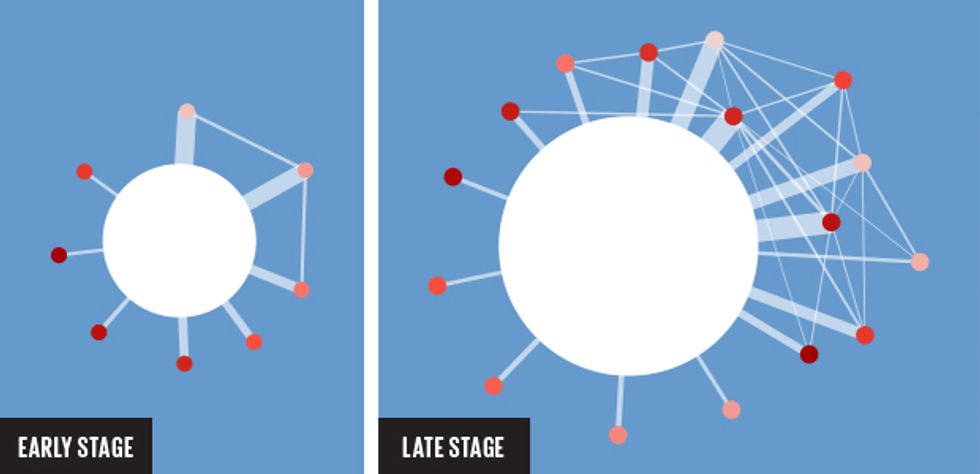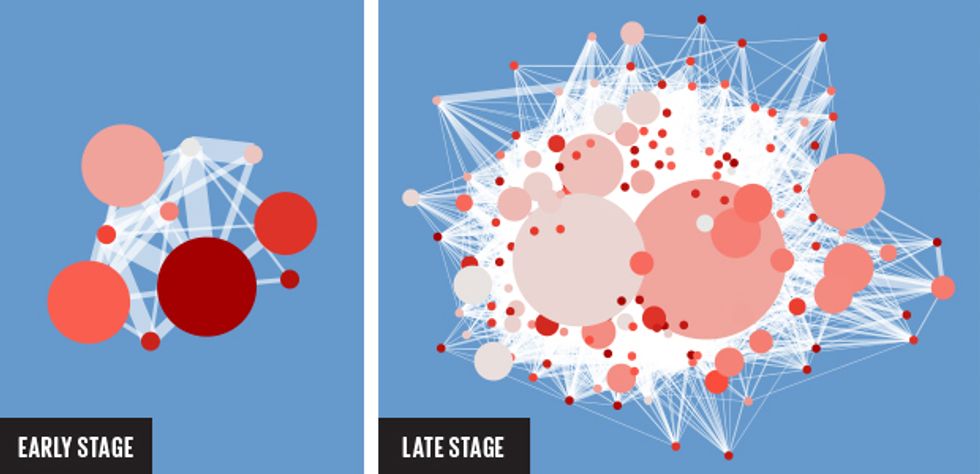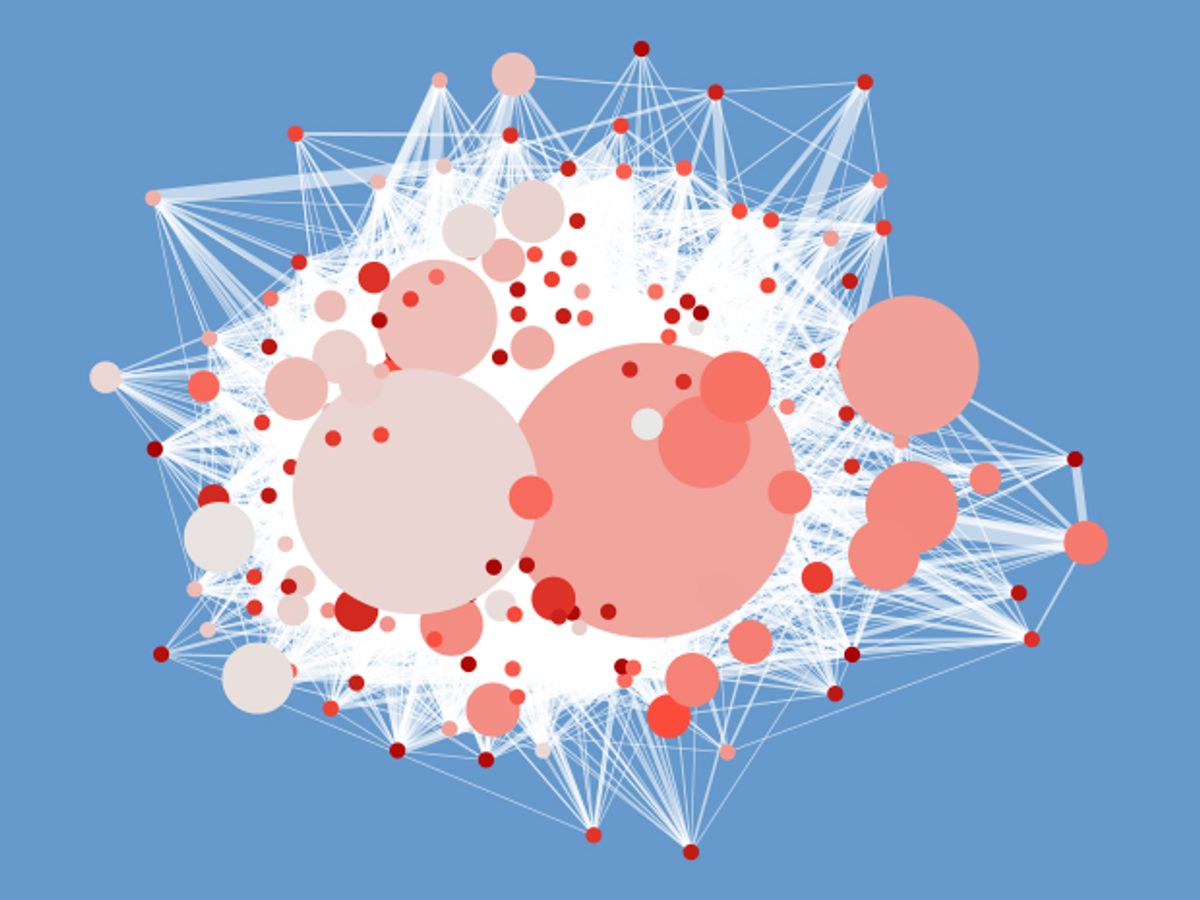Memes, like Rickrolling or LOLcats, are the invasive species of social network ecosystems such as Facebook and Twitter. “Viral hashtags are so interesting that even at first sight, you just start to use them,” says Yong-Yeol Ahn, assistant professor at Indiana University’s School of Informatics and Computing. Ahn and his coauthors have isolated the network properties of memes and turned them into a forecasting tool, enabling the prediction of which Twitter hashtags will go viral nearly two out of three times based on how the hashtag is shared in its early stages. Ahn says later this spring they’ll be publishing follow-up research that looks at predicting just how big a splash a viral meme will make.
Circles represent communities—densely connected groups of users. Circle size represents the number of tweets with a given hashtag made per community. The color indicates when in the hashtag’s life span the most tweeting occurred in a community (darker is newer).
#ProperBand

#ThoughtsDuringSchool

This article originally appeared in print as “Forecasting Virality.”
Margo Anderson is senior associate editor and telecommunications editor at IEEE Spectrum. She has a bachelor’s degree in physics and a master’s degree in astrophysics.



